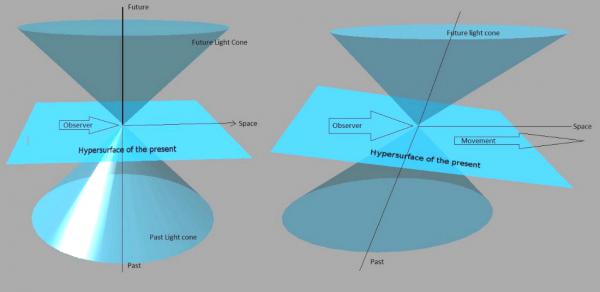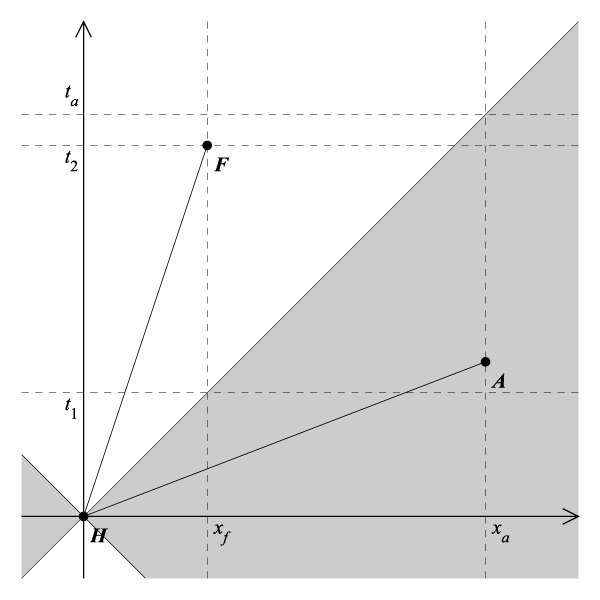BY LETTER
Light-cone
Technology > Application > Communications
Technology > Application > Metric Engineering
Science > Physics
Technology > Technology Type or Material > Space-Time Engineering
Technology > Application > Metric Engineering
Science > Physics
Technology > Technology Type or Material > Space-Time Engineering
 Image from Steve Bowers | |
| Spacetime diagram of the light cones of observers who are moving with respect to each other. Due to the Lorentz transformation, the three-dimensional region known as the 'hypersurface of the present' of any observer is tilted if compared to that of another observer moving at a different rate. This means there can be no real simultaneity between events as seen by observers moving at different velocities. | |
The path that light created at a single point in space and time and travelling in all directions would take through spacetime. Although in fact this affects an ever-expanding spherical region in 3d space, most modosophonts find this easier to imagine with the spatial dimensions reduced to two; the result is an expanding circle of influence which when graphed against time produces a pair of cones reaching into the future and the past that converge on the time and place that the light was emitted.
The concept of a light cone is important to an understanding of causality: since no influence can travel faster than light, only events on or within the past light cone can affect that point in timespace and only events on or within the future light cone can be affected by it.
Light-cones and Wormholes
By drawing diagrams of the light cones of regions of spacetime which are connected to other regions by wormhole, it is possible to show that some wormholes allow causality to be preserved, while others permit causality violations (and are therefore forbidden by the Cosmic Censorship Principle).
Related Articles
- Light Speed Frontier
- Light Speed Paranoia
- Light, Speed of - Text by M. Alan Kazlev
Designated as c, the speed of light is about 300,000 km/s and is constant as perceived by all observers. - Light-year - Text by M. Alan Kazlev
The distance light travels in one standard or metric (Earth) year, viz. 9.46x1012 km. Standard unit of measurement. It is equal to 6.323x104 astronomical units (AU) or 0.307 parsecs. - Lightlike - Text by M. Alan Kazlev
A path through space-time that always moves at the speed of light.
Appears in Topics
Development Notes
Text by Stephen Inniss
Initially published on 03 January 2013.
See this article for more details.
Initially published on 03 January 2013.
See this article for more details.







